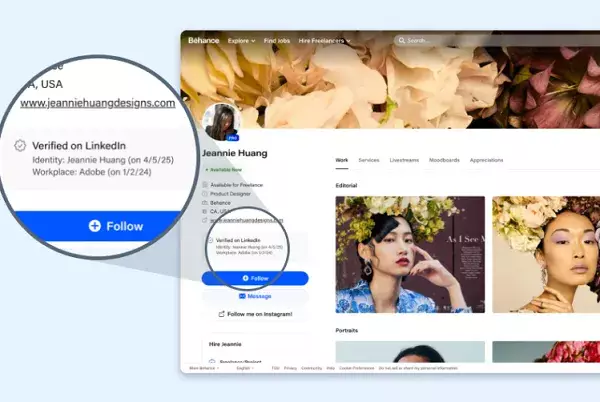As we navigate an increasingly digital world, the necessity for genuine online identities has never been more prominent. LinkedIn, the leading professional networking platform, has made a groundbreaking announcement that signifies a substantial leap in the realm of identity verification. By now allowing third-party platforms to display its ID verification markers, LinkedIn not only strengthens the authenticity of professional relationships but also establishes a framework for users to embrace their true identities in a sea of digital impersonation and spam.
Originally introduced in 2023, LinkedIn’s ID confirmation process facilitates a free and user-friendly way for individuals to verify their identities through established third-party providers. This initiative diverges from the traditional celebrity-centric verification seen on other platforms, instead offering a more egalitarian approach where every user—regardless of status—has the possibility to display a verified status. This move reflects LinkedIn’s commitment to fostering a more trustworthy professional environment, aligning with its core ethos of connecting real people in a professional context.
Collaborative Efforts with Third-Party Platforms
LinkedIn’s recent partnership with third-party platforms such as Adobe has amplified the implications of its ID verification process. With Adobe’s integration of LinkedIn’s verification into its Content Authenticity app and Behance portfolio platform, creators who achieve LinkedIn verification can now proudly showcase a distinct “Verified on LinkedIn” badge. This innovation not only elevates the profile of verified users but plays a pivotal role in attesting to their credibility within the creative community, thus elevating the whole industry’s standards.
In an age where misinformation can spread like wildfire, especially through the proliferation of AI-generated content, establishing authenticity is critical. By allowing platforms like Adobe to incorporate LinkedIn’s ID verification system, LinkedIn is effectively expanding its ecosystem and making it easier for verified individuals to display their credentials across diverse platforms. This cross-platform reinforcement of identity validation can be perceived as a seamless way to build trust among creatives, clients, and collaborators, assuring them that they are indeed engaging with genuine professionals.
Combatting the Digital Anonymity Dilemma
The issue of anonymity in online spaces remains a controversial topic. Many users appreciate the veil of anonymity that social media offers, arguing that it protects freedom of expression and privacy. Yet, the other side of the coin highlights the ramifications of this anonymity, fostering environments conducive to impersonation and harmful behaviors. As LinkedIn’s ID verification initiative gains momentum, it may signal a turning point in how we manage our online personas.
Critics argue that the mandatory requirement for online identity verification could infringe upon individual privacy rights. However, initiatives like LinkedIn’s introduce a viable alternative by providing users the option to get verified through credible channels. With over 80 million members engaging with its voluntary ID confirmation, LinkedIn successfully demonstrates that when there are incentives for users to be transparent about their identities, a natural shift towards a more responsible digital environment could emerge.
Furthermore, the precedent set by LinkedIn’s collaboration with third-party verification can serve as a potential model for future legislative discussions around universal ID verification across social media platforms. The nuances of such a system could pave the way for broader regulations that marry the need for accountability with the preservation of user privacy.
Enhancing Digital Ownership and Content Authenticity
Complementing its ID verification efforts, LinkedIn’s commitment to expanding support for Adobe’s “Content Credentials” opens new avenues in content ownership affirmation. By embedding metadata that signifies ownership within digital works, creators can provide undeniable proof of authorship, further safeguarding their contributions in an environment increasingly populated by AI-generated replicas.
This dual push for ID verification and content ownership not only imparts transparency but also ensures that accountability is ingrained within digital interactions. As we face the repercussions of enhanced AI capabilities, the future landscape may require a clearer distinction between the original and the replicated, making initiatives like this critically important for the integrity of creative fields.
While the discussion around identity verification may still be in its nascent stages, LinkedIn’s proactive stance illuminates the path towards a more authentic digital ecosystem. By fostering verifiable connections and ownership, LinkedIn is not merely reacting to current trends but shaping the future framework of professional networking and creative authenticity.

